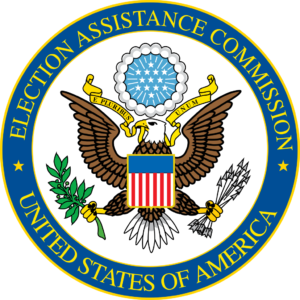
The U.S. Election Assistance Commission (EAC) was established by the Help America Vote Act of 2002 (HAVA). EAC is an independent, bipartisan commission charged with developing guidance to meet HAVA requirements, adopting voluntary voting system guidelines, and serving as a national clearinghouse of information on election administration. EAC also accredits testing laboratories and certifies voting systems, as well as audits the use of HAVA funds.
Read Full Story at the Election Commission Website
On January 23rd, 2020 The U.S. Election Assistance Commission (EAC) announced the six winners of the 2019 Clearinghouse “Clearie” Award for Outstanding Innovations in Election Administration. The awardees harnessed the buy-in of election officials to secure statewide databases and election management systems, utilized geographic information systems to improve operations, developed apps for shortening lines, conducted extensive outreach to tribal lands, engaged the community with roundtable discussions, and requested real-time feedback from voters through a QR code.
One of the six winners of the 2019 Clearie Award is the Ann Arbor City Clerk’s Office Line Tracking Project
The Line Tracking Project is the culmination of several years of extensive research studying voter wait times. The project features a new public website allowing voters to check wait times at their local polling place and access additional tools to facilitate the voting process. The website and tools were introduced in 2018 and improved upon during the 2019 elections. As home to the University of Michigan, many Ann Arbor polling places previously experienced long wait times. In partnership with the University, the project team continues to evaluate how line counts, website data, e-pollbook numbers, and ballots cast can be harnessed to improve the voter experience.
In the summer of 2018, staff in the City’s Information Technology Department introduced the City Clerk to Scott TenBrink, Project Manager for the University of Michigan School of Information Citizen Interaction Design program. A partnership was established and two students were awarded a fellowship opportunity to study the City’s line management questions. Questions from the City Clerk’s Office included how to manage long lines, how the number of people in line equates to the total amount of time in line and how long is too long for a voter to wait in line. The team worked with the City Clerk’s Office to design a solution that would both help better understand voter turnout behavior and use technology to manage the line.
The University students proposed a solution that the City Clerk work with the City’s Information Technology Department to develop a simple mobile application that could be used by City staff or election inspectors to report Election Day line counts in real-time using a calculator-style tool to input counts.
The City ultimately created a web application, eliminating the need to require election inspectors to download a new application and for ease of training.


